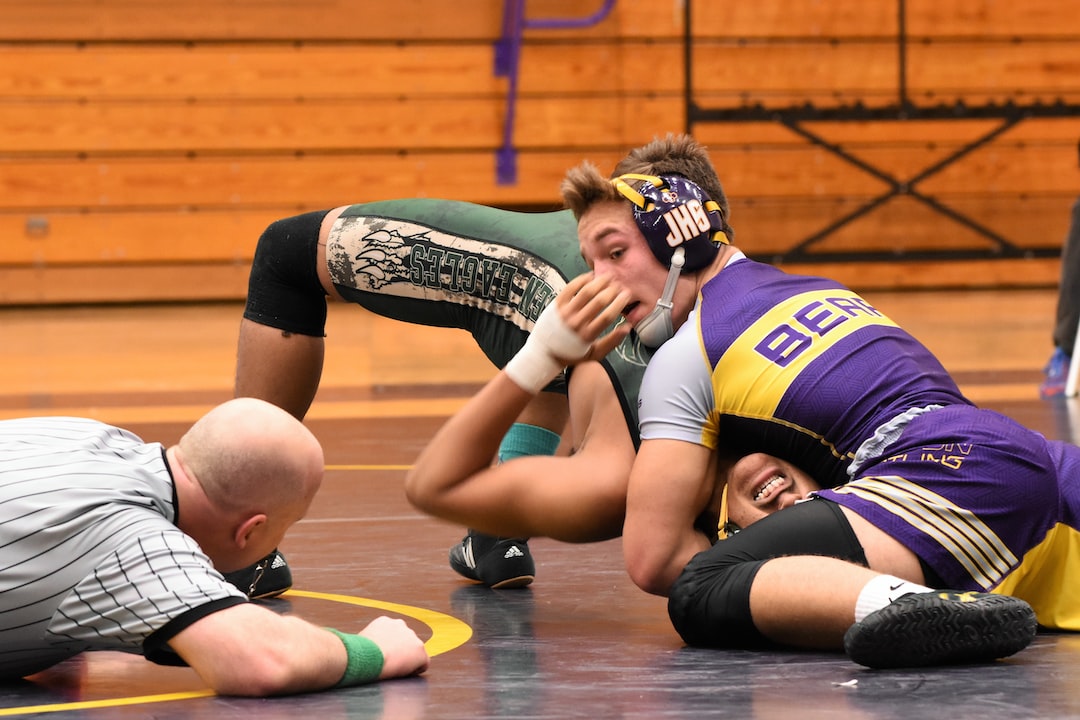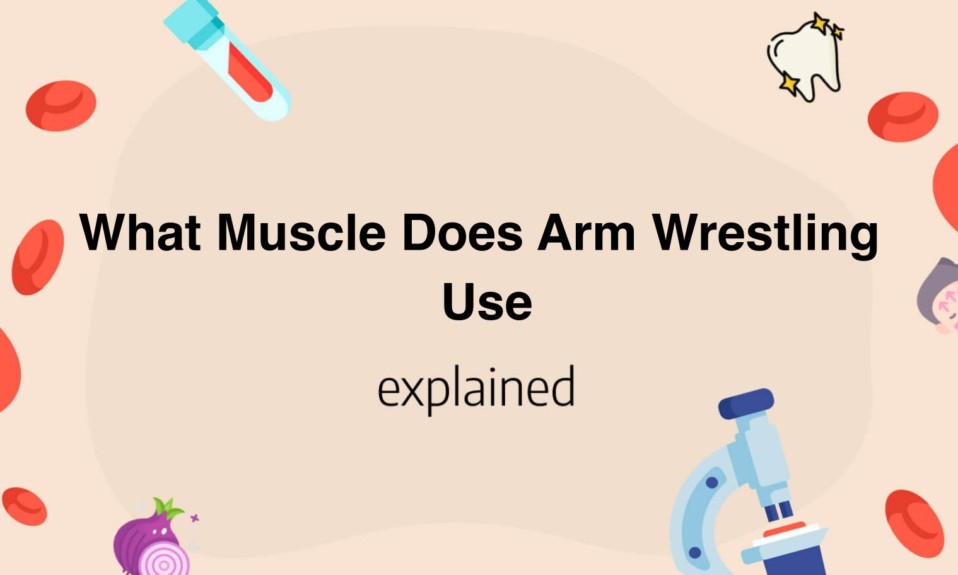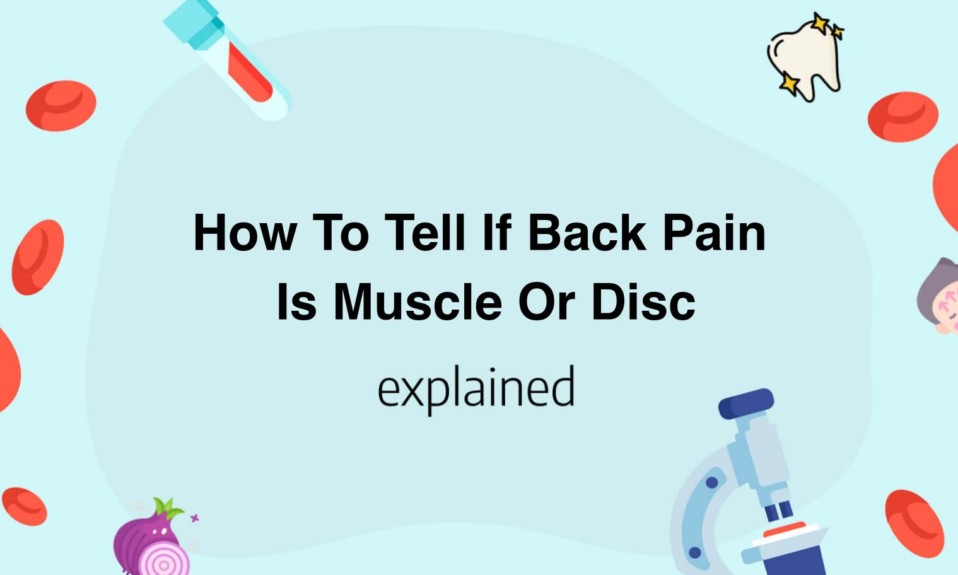Arm wrestling is a competitive strength sport that involves two individuals trying to force each other’s hand down onto a pad.
It primarily utilizes the muscles in the arms, particularly the forearms, biceps, triceps, and shoulders.
Strong grip and wrist muscles are essential for a good arm wrestler, as is explosive power in the upper body.
Understanding the muscles used in arm wrestling can help athletes tailor their training for optimal performance.
- Arm wrestling primarily uses the muscles of the upper arm, including the biceps and triceps.
- The muscles of the forearm also play a significant role in arm wrestling, particularly the wrist flexors and pronator teres.
- The shoulder muscles, such as the deltoids, are also important for stabilizing the arm during the match.
- Back muscles, including the latissimus dorsi and rhomboids, can provide additional support and power during an arm wrestling match.
- Overall, arm wrestling requires a combination of strength, endurance, and technique in order to be successful.
Benefits of Arm Wrestling to Improve Muscle Strength
Arm wrestling is often dismissed as a simple, macho sport with no real merit, but it can actually be a great way to improve muscle strength.
Engaging in arm wrestling on a regular basis can help you build and tone your arm, shoulder and back muscles, as well as work on improving your grip strength – all of which are crucial for a healthy body and good physical performance.
Additionally, arm wrestling can also help you develop good technique and control, especially when it comes to using your body weight and positioning to your advantage.
One of the biggest advantages of arm wrestling is that it is a low-impact, high-intensity workout that can help you burn calories and improve your cardiovascular health.
By engaging in arm wrestling, you’ll challenge yourself to exert maximum force in a short amount of time, which can be just as effective as traditional forms of cardio exercise like running or cycling.
Moreover, arm wrestling is a sport that can be practiced at any age or fitness level, making it a great option for those who are just starting out on their fitness journey or who need to incorporate fun and engaging activities into their workout routines.
To really make the most of arm wrestling as a workout strategy, it’s important to focus on proper form and technique.
This means engaging all of the muscles in your arm and shoulder, and using your grip strength to hold your opponent in place while you exert force.
You can also use varying techniques to improve your muscle strength and control, such as focusing on speed and explosiveness, or using slower, more deliberate movements to build endurance and stamina.
Overall, arm wrestling can be a fun, engaging, and effective way to improve muscle strength and cardiovascular health.
By focusing on proper technique and incorporating arm wrestling into your regular workout routine, you can build muscle, burn calories, and develop the kind of strength and control you need to excel in both sports and everyday activities.
So why not give it a try and see how your muscles benefit from the thrill of the sport?
- Low impact, high intensity
- Develops technique and control
- Can be practiced at any age or fitness level

Top 5 Muscles Used in Arm Wrestling
Arm wrestling is a sport that requires not only strength but also skill and technique.
Although many muscles are involved when arm wrestling, there are five muscles that play a major role in this sport.
These muscles are the biceps brachii, brachialis, brachioradialis, pronator teres, and flexor carpi radialis.
- Biceps brachii: This muscle, commonly known as the biceps, is located at the front of the upper arm.
It is responsible for flexing the elbow joint, which is a vital movement when arm wrestling.
- Brachialis: The brachialis is a muscle located underneath the biceps brachii.
It is responsible for flexing the elbow joint and is a key muscle in arm wrestling.
- Brachioradialis: The brachioradialis is located on the forearm, and it is responsible for flexing the forearm at the elbow.
This muscle is often overlooked in arm wrestling, but it plays a significant role in maintaining grip strength during the match.
- Pronator teres: The pronator teres is located in the forearm and is responsible for rotating the forearm inward.
This muscle is essential for controlling your opponent’s wrist and arm during the match, giving you an advantage.
- Flexor carpi radialis: This muscle is located on the side of the forearm and is responsible for flexing the wrist and hand towards the forearm.
It plays an important role in arm wrestling as it allows you to maintain a strong grip and keep your opponent’s hand and wrist under control.
The biceps brachii is important for maintaining a strong grip during the match.
Strengthening your brachialis is crucial as it allows you to generate more power and leverage in your arm wrestling matches.
In conclusion, these five muscles play a vital role in arm wrestling, and by strengthening them, you can significantly improve your performance.
It is essential to focus on these specific muscles to gain an advantage over your opponents.
By applying specific exercises targeting these muscles, you can improve your arm wrestling skills and become a successful arm wrestler.
What Muscle Does Arm Wrestling Use
Arm wrestling is a sport that requires strength, power, and technique.
The most used muscle during arm wrestling is the brachioradialis muscle, located in the forearm.
This muscle is responsible for flexion at the elbow, which is a crucial movement during arm wrestling.
However, other muscles are also involved, such as the biceps brachii and the pronator teres.
The biceps brachii muscle is responsible for the initial lift of the arm, while the pronator teres muscle is responsible for pronation of the arm, which is the twisting movement.
All these muscles work together to provide the strength and power required to win an arm wrestling match.
To train these muscles, it’s important to focus on exercises that target the muscles used during arm wrestling.
Hammer curls, reverse curls, and wrist curls are great workouts for the brachioradialis muscle.
Meanwhile, biceps curls, chin-ups, and pull-ups are great workouts for the biceps brachii muscle.
Finally, the pronator teres muscle can be trained by performing wrist pronation and supination exercises with dumbbells or using a wrist roller.
It’s important to note that arm wrestling is not just about pure strength, but also about technique and strategy.
For example, instead of solely relying on brute force, arm wrestlers can manipulate their opponent’s arm by using leverage and angle to gain the upper hand.
In addition, arm wrestlers can also use their body weight to their advantage by leaning forward or backward during the match.
In conclusion, arm wrestling relies heavily on the brachioradialis muscle, but other muscles such as the biceps brachii and the pronator teres also play a significant role.
It’s important to train these muscles to improve overall strength and technique.
Remember, it’s not just about strength but using strategy and technique to overcome your opponent.
Understanding the Techniques of Arm Wrestling for Building Muscles
Arm wrestling is not just a contest of strength, it is also a great way to build muscle.
In order to understand the techniques of arm wrestling for building muscles, it is important to first understand the basic elements of arm wrestling.
One of the most important parts of arm wrestling is having a strong grip.
This can be achieved by performing exercises that strengthen the fingers, such as gripping weights or using a grip trainer.
Another important aspect of arm wrestling is having strong wrists.
Wrist curls and reverse wrist curls are great exercises to strengthen the wrists for arm wrestling.
When it comes to the actual techniques of arm wrestling, the key is to use the power of the entire arm, not just the bicep.
In fact, the tricep plays a big role in arm wrestling, as it is responsible for extending the arm.
It is also important to use the entire body and not just rely on arm strength.
Engaging the core and legs can give you the extra push needed to win a match.
In addition to these techniques, it is important to use proper form during an arm wrestling match.
This means keeping your elbow close to your body and not extending it outwards, as this puts unnecessary strain on the shoulder.
It is also important to stay relaxed and not tense up, as this can decrease your overall strength and make it easier for your opponent to defeat you.
Overall, arm wrestling is a great way to build muscle, especially in the arms, wrists, and core.
By utilizing proper techniques and incorporating exercises that target these specific areas, you can become a strong and successful arm wrestler while also improving your overall physique.
Read also: Water Sound In Belly During Pregnancy
How Arm Wrestling Affects Your Upper Body Muscles
Arm wrestling is an activity that often gets overlooked by fitness enthusiasts.
Not only is it a competitive sport, but it also has various benefits for your upper body muscles.
Primarily, arm wrestling targets the biceps and forearm muscles.
When you pull your opponent’s hand towards your side, you are using your biceps to contract and flex your elbow joint.
This repetitive motion helps to strengthen and tone those muscles.
In addition, arm wrestling also works the muscles in your wrist and hand.
Wrist muscles such as the extensor carpi radialis and flexor carpi radialis are put to work when you twist and turn your hand during the match.
Your hand muscles, including the flexor digitorum superficialis and extensor indicis, are also put to work when you grip and hold onto your opponent’s hand.
Arm wrestling can also help you develop better grip strength, making it easier to perform everyday tasks like carrying groceries or opening jars.
Consistently practicing arm wrestling can also help you improve your overall upper body strength and endurance, making it an excellent complementary exercise for weightlifters or athletes.
However, it is worth noting that arm wrestling is not risk-free.
If done improperly or excessively, it can cause muscle strains in your biceps, forearm, wrist, and hand muscles, resulting in pain and discomfort.
It is important to approach the activity with caution, especially if you are a beginner.
Starting with a lighter resistance can help you gradually build strength and prevent injury.
In conclusion, arm wrestling may not be the most conventional form of exercise, but it has numerous benefits for your upper body muscles.
Incorporating it into your workout routine can help you improve your biceps, forearm, wrist, and hand muscles, as well as your overall strength and endurance.
However, it is important to approach the activity with caution and avoid overexerting yourself to prevent injury.
Read also: Why Is My Pregnant Belly Soft When I Lay Down
Basics of Arm Wrestling to Develop Arm Muscles
To develop arm muscles, arm wrestling is an effective workout routine that you can do with minimal equipment.
There are some basic techniques that you need to master to perform this exercise correctly.
First, you should have a good grip on your opponent’s hand, wrist, or forearm.
This grip needs to be strong enough to keep your opponent from slipping away but not too tight that it strains your hand.
Second, always keep your elbow close to your body and use your entire arm to push your opponent’s arm down.
Third, try to use your body weight to your advantage by leaning forward to put more pressure on your opponent.
There are three main muscles groups that are worked out during arm wrestling.
The biceps are the most prominent muscles, responsible for flexing the arm and lifting things towards you.
A strong grip is essential in arm wrestling and squeezing tightly during the bout works your forearm muscles, particularly the flexors.
Another muscle group is the triceps, located on the back of the upper arm, which is responsible for extending the arm and pushing things away from you.
Engaging in arm wrestling activities can lead to impressive gains in arm strength and thickness.
However, it is important to note that proper form is crucial in preventing injury during the exercise.
If you are new to arm wrestling, start with lower resistance and gradually increase as you become more comfortable with the technique.
It is also beneficial to perform exercises that target the muscles in your arms as complementary workout routines.
Examples would be doing bicep curls and tricep extensions using dumbbells, bars, or cables.
To summarize, arm wrestling can be an effective and enjoyable way to develop arm muscles and improve grip strength.
Keep in mind that proper form is essential, and gradually increase the resistance as you get stronger and more comfortable with the technique.
With consistency, arm wrestling can lead to impressive gains in bicep, forearm, and tricep muscles, but you should supplement arm wrestling with other strength training exercises to help develop a well-rounded, muscular physique.
You’ll also like:










